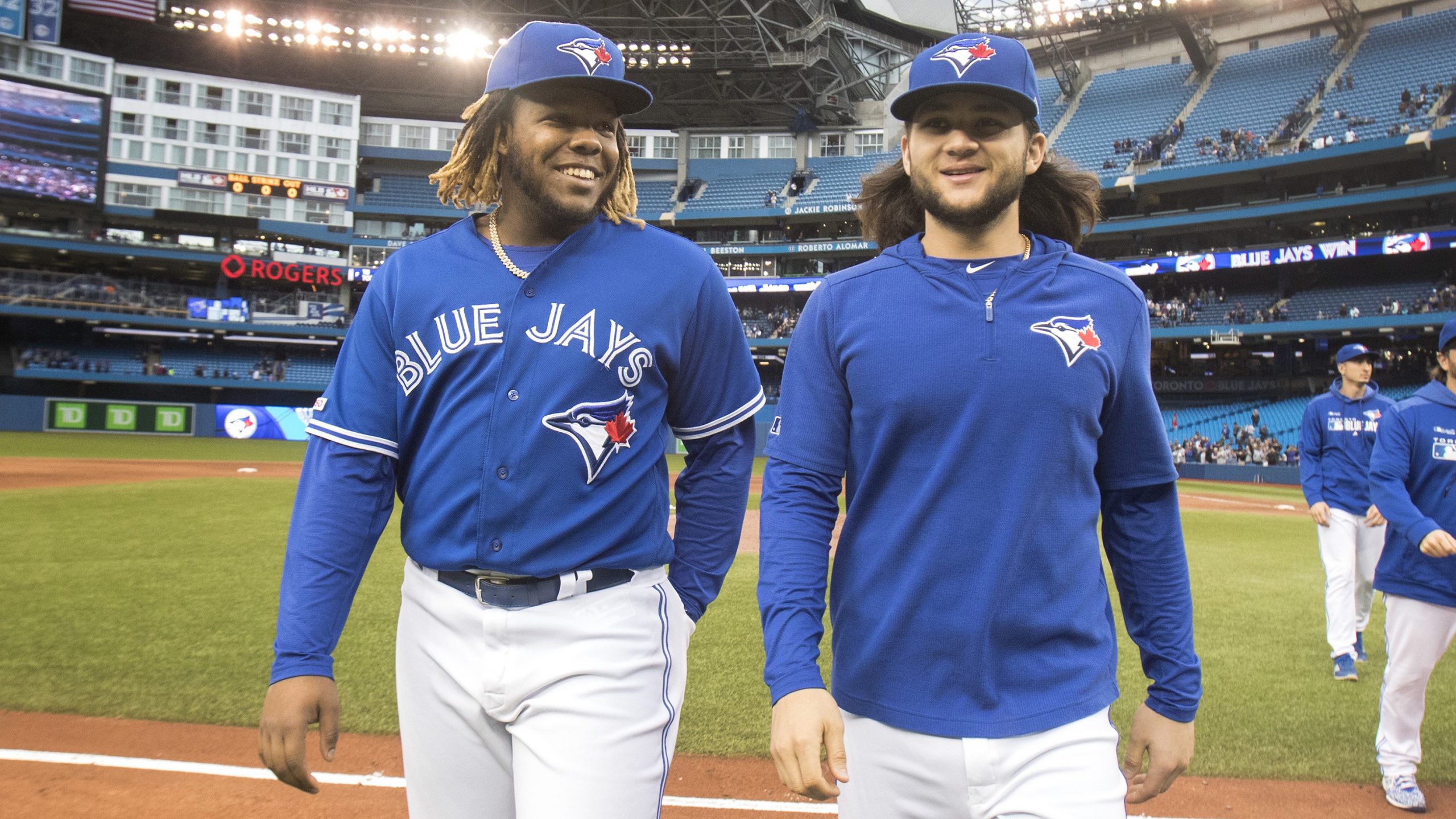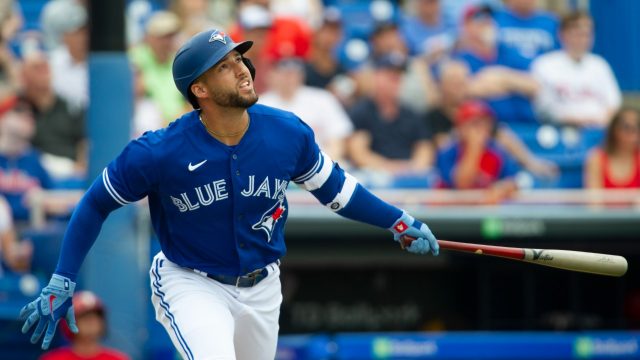DUNEDIN, Fla. — Technically speaking, the Toronto Blue Jays haven’t finalized their opening day roster yet. The way manager Charlie Montoyo describes it, the competition continues for a few open bullpen spots and there’s still a bench role available — even after the trade that sent Reese McGuire to the Chicago White Sox for fellow catcher Zack Collins.
But barring the unexpected, the major elements of this team are now in place.
Alejandro Kirk’s defensive importance to the Blue Jays only grows after the departure of McGuire, who had worked with Toronto’s pitchers for the last four seasons. Greg Bird still seems well-positioned to claim the team’s last open 40-man spot and earn a bench role. And with respect to the relievers fighting for the remaining bullpen spots, those decisions won’t fundamentally alter the shape of this team.
By now, we know what the Toronto Blue Jays look like. The more interesting questions revolve around how the players will be deployed.
On that front, the trade of McGuire for Collins marks a subtle but significant shift. While both are 27-year-old catchers who hit from the left side, their profiles as players are very different. Where McGuire’s biggest strength is his glove, the Blue Jays are most intrigued by Collins’ bat. His experience behind the plate is an asset, of course, but he may end up being used more as a designated hitter or pinch hitter.
While Collins has a lifetime OPS of just .645, some of his underlying numbers suggest he has greater offensive upside. For his career, he has a barrel rate of 11.4 per cent, an average exit velocity of 91.1 m.p.h. and a max exit velocity of 109.9 m.p.h. — all higher than McGuire's. On a team that tilts heavily to the right, his left-handed bat has the chance to prove useful. If not, the acquisition cost was modest for an organization that’s already deep in catching.
Defensively speaking, some in the industry view Collins as below-average. But as Kirk has continued developing behind the plate, he became a more important part of the Blue Jays’ defensive plans. With one notable exception, the Blue Jays have been sure to pair Kirk with all of their pitchers this spring in an attempt to build familiarity.
"That's why we like everybody catching everybody," manager Charlie Montoyo said Sunday morning, before the trade had been completed. "That’s what really happened this spring and everybody got every pitcher except (Danny) Jansen, who was the only one who got (Hyun-Jin) Ryu."
The Blue Jays gained some flexibility with the trade: Collins has minor-league options remaining while McGuire does not. While Collins has a chance to break camp with the team, rosters will shrink from 28 to 26 on May 1. They’ll have the flexibility to send Collins to the minors if that’s useful in the weeks ahead.
Of course, there’s also the question of how the Blue Jays use their existing players and Sunday’s lineup offered some further clarity there. Earlier in the week, Vladimir Guerrero Jr. had been hitting in the two hole, but the Blue Jays moved him back to the third spot in the lineup Sunday and he ran around the bases like a leadoff hitter.
In the first inning, Guerrero Jr. ran through a stop sign at third base, scoring all the way from first on a Yankees throwing error to the delight of the Blue Jays fans at TD Ballpark.
Afterward, Guerrero Jr. explained he didn’t see third base coach Luis Rivera telling him to slow down. But regardless: after stealing a base Saturday, it’s clear the 23-year-old is moving well.
“Physically I feel a lot better,” Guerrero Jr. said through interpreter Hector Lebron after the 7-5 win over the Yankees. “I feel faster. I can run the bases a lot better than last year. Physically I feel very, very good right now.”
The Blue Jays intend to be aggressive on the bases in 2022 with the likes of Bo Bichette and Raimel Tapia set to steal bases regularly. After a 48-homer season in 2021, it’s clear Guerrero Jr. is a better hitter than he is a base stealer but that doesn’t mean he couldn’t run more if he wanted to.
“That’s the one thing about Vlad Guerrero,” Montoyo said. “He could be a 30-30 (player) if he tried. I’m telling you. People don’t think he’s fast. We don’t want him to be 30-30, but 30-10? I’ll take that. Or 40-10. He could do it.”
As for the batting order, the Blue Jays believe their players are better off if they’re comfortable under different circumstances. And after a year in which Montoyo used 133 different batting orders, it's clear the days of a single lineup are long gone.
As for Guerrero Jr.’s preference?
“It doesn’t matter,” he said. “I just want to be in the lineup. It doesn’t matter where the manager puts me in, I’m just going to go out and do my job."
In 2021, when Guerrero Jr. hit 48 home runs on his way to a second-place MVP finish, he hit third 135 times. When he wasn't batting third, he hit second most often (18 games) followed by fifth (seven games) and cleanup (once).
How that breakdown looks in 2022 remains to be seen. And whether he continues running like this is secondary, too. Most important of all: As the season draws closer, the Blue Jays’ most important player is feeling strong — and fast.



